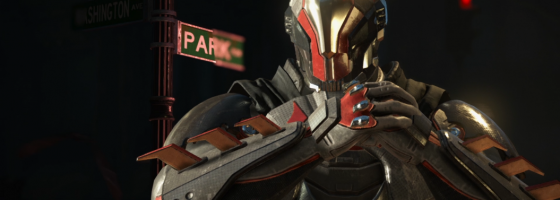I recently picked up Mortal Kombat 11 while it was on sale to see how the latest entry in the venerable fighting franchise has grown. And it turns out my first mistake was not buying the special edition, with the second mistake not being prepared for the sheer amount of microtransactions in it. We have seen microtransaction-based content enter the AAA and full retail space — creating a case of double-dipping for developers. Looking at this trend, I know I’m not the only one who doesn’t like it, but this also has some unintended consequences as well.
Games as a Service:
As we’ve talked about before, microtransactions are a part of the idea of games as a service. You’re not just buying a game for a 20-30-hour experience, you can get additional content, microtransaction-based buffs, new cosmetics, quests, features, etc.
Major names in the industry have certainly embraced this as a way of getting additional profit out of a game and prolong the life of it. Mortal Kombat 11 is just one example, and we can easily look at games like Fortnite, Call of Duty, and many more.
Even one of the giants of singleplayer games: Rockstar, has embraced this continued support and microtransactions in their games, and 2K got into major trouble with their sports offering and their microtransactions.
The good of this system has always been to keep these games going and give fans more content over the months or years of service. However, they also leave a stain on most of the games they’ve been added to, and creates problems for the future.
No One to Show Off Too:
The most popular and easily designed form of microtransactions in these games comes in the form of cosmetics. There is a lot to talk about in terms of the psychology of these purchases. One thing we need to get on the same page about is that cosmetics are no longer considered “fair” in terms of being locked behind a paywall.
For many people who come to identify themselves as their character, the use of cosmetics is a big deal. Not only that, but they are also a form of peer pressure for being the only person without a unique cosmetic or character skin.
So much of the focus has been on pumping out all manner of items that can be attached to loot boxes, sold in bundles, or simply to fill an online store. The problem is that these purchases are all built around the shelf life of the game. A common theme for this post is talking about when these games are no longer being supported by the developer, and the first thing that immediately loses value is cosmetics.
For every game abandoned, or no longer being supported, there are people who have spent hundreds of dollars that is now useless to them with no one around to even care about it.
The next element is content, and nothing sours a player more than learning there is missing content.
Limited Time Content:
The next popular example of live service content has been limited-time content. Holiday events, battle passes, seasons, and more — these are ways to reward players with unique content if they participate. Many free to play games love to have special items that can only be bought or acquired under a fixed time period.
I have never been a fan of limited-time content as it does two things. One: it punishes people who have lives and can’t commit to playing the same game daily. Second: it locks content permanently away from people who are playing a game late.
Some developers will bring back content for seasonal events, but there have been plenty of games that just keep adding things in. Limited-time content is very effective to drive interest and purchases in a game. It doesn’t feel good as a consumer to be missing out on elements in a game with no chance of ever getting them.
One thing I liked was when Io Interactive brought all the time-limited events in Hitman back permanently for players who missed them. I always feel that content of this kind should be available in some form; even Redhook allowed consumers to purchase its Kickstarter-only custom skin for one of their classes.
For multiplayer titles, microtransactions are an ever part of the long-term support, but what about singleplayer games?
Left in Imbalances
A big reason for the pushback against loot boxes and microtransactions last decade was when more singleplayer titles began to have them. You could buy additional loot, extra lives, and even cheat codes for many AAA games.
The problem with this mindset is that it always comes up in games that feel like they were balanced against the player to justify the loot boxes. With the original release of Diablo 3, the developers left in some very egregious issues with the balance at the end game in order to justify the auction house system.
Mortal Kombat 11 and Shadow of War both faced pushback when people felt that the games were balanced too heavily for microtransactions and consumable purchases. While these games were changed, there are still games out there with tacked on microtransactions still lingering long after the shelf life of these titles.
There is a problem for games that are more than a year old that the first time you load them up that you’re confronted by all many of skips, cheats, and boosters, in a singleplayer game.
Again, I’m not talking about DLC or cosmetics here, but having game-affecting purchases only there to get people to spend more money for these games. However, for people arriving late to these games, they typically don’t have this problem, which takes us to the next point.
Punishing the Fans
It has become the rule for games that launch with season passes, DLC, etc., that if you are not a superfan, you should always wait for the special edition (otherwise known as the “Game of the Year Edition”) of the game. The reason is that this version will always include the most important DLC and the game, and will be priced cheaper than buying the content individually.
Going back to the MK 11 example, that’s what happened during the sale season, with the Kombat pack not being discounted for people who already own the game. Its examples like this that raise one of the harshest criticisms about these games, they always end up punishing fans long-term. Why spend over $90 on a game day one, when you can get all that content for probably $30 or less a few months down the line?
Some will argue that the fans are being given the “honor” of experiencing the game early, but that argument doesn’t work anymore. These games tend to grow with new content and patches, once again making them better for people playing the best versions of them as opposed to the launch one.
Just like with the previous example, it kills my interest to support a game knowing that I would have to spend more money to get to the same point as people buying the GOTY edition of a title.
Speaking of games that last for a year or more, that takes me to my final point, and one more issue people need to think about.
Leaving it All Behind
When we look at the vast majority of free to play or microtransaction AAA games, they have a limited lifespan. Sometimes it’s because there is something new to move on to; sometimes it’s because the game is not earning enough money to keep it going.
Whatever the case, for a lot of these games there will come a point when they are effectively “dead.” The reason I use quotes there is that the game could still stay up, but without enough players to support it or have an interest, there’s no point in playing.
I tried a F2P game a few years back on PSN that the only audience left was the high-level players. The problem was that progress was tied to competing with players of even level and power, and there was literally no way for me to keep playing the game.
In the AAA space, we’ve seen plenty of developers put out yearly or every other year sequels to popular franchises. Due to the shifting consumer-base, when the newest game comes out, most of the fans will move on to the next.
This creates two issues that developers haven’t really solved yet. For someone new joining the game, they’re going to find that there is no reason to ever spend money or try content that’s behind a paywall, because there will be no one to play with. All the bonus content, dlc packs, cosmetics, weapons, etc., are just worthless without a player base around to go with it.
And second, for players who do move on, all the microtransactions they bought previously are now null and void. Spending $400 in the first game in a series, means you’re going to be entering game #2 at $0 spent.
While it’s not fair to expect developers to bring 100% of the content over in each new game, as with the recent Pokémon debacle, there still needs to be something there for people who invested their money. Therefore, the best examples of long-term games as a service do not release multiple iterations and avoid segmenting their fanbase — with the best example of this being Warframe. Warframe has had years of updates, engine improvements, and even brand-new game systems added; none of which required a sequel purchase.
Payday 2 is another tricky example of this situation. The game was only supposed to have a few years of post-release support, and that ballooned into years. Given the developers’ hope of making a third game, it’s completely up in the air what will happen to all the weapon skins, masks, and achievements associated to Payday 2 for returning fans.
Both Injustice 2 and Mortal Kombat 10 featured a lot in terms of cosmetics and microtransactions, but as soon as the next iteration came out, those games went away; leaving content that will never be seen again and no reason to ever purchase them. I can only assume that NetherRealm Studios has something in mind for their next game, which will eventually put Mortal Kombat 11 on the chopping block.
I’m willing to bet that there will be very little to zero carryover for spenders in either Injustice 2 or Mortal Kombat 11 for whatever the next iteration will be.
Burning Money:
Ultimately, microtransactions in games is akin to the quick burn strategy for earning money. Unless we are talking about expansion-worthy content, there really isn’t any long-term reason to spend money on microtransactional content. Only a handful of games manage to survive for years, and AAA development is always about chasing the next sequel or iteration
I see it as this: Why should I spend easily over a hundred dollars for a game, when just the original purchase will retain its value? I hope that a big push for the game industry this decade will be looking at preserving games as opposed to abandoning them, and I just wonder what will come of the titles released in the past ten years? Will people return to games to find now defunct microtransaction shops with games begging for more purchases despite the developers not even being around to get that support?
As the new decade begins, the main question for a lot of people is just what will be the future of microtransactions in games. The loot box law that was being discussed last year may still come, and we have yet to see whether microtransactions in games will remain.
If you enjoy my work and like talking game design, the Game-Wisdom Discord is open to everyone.





